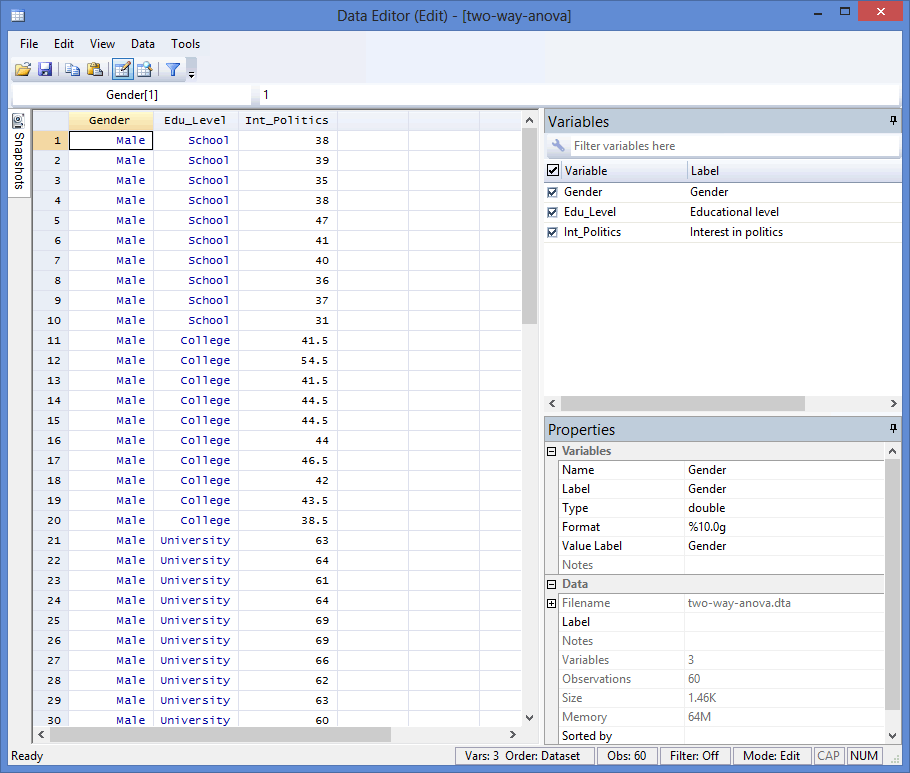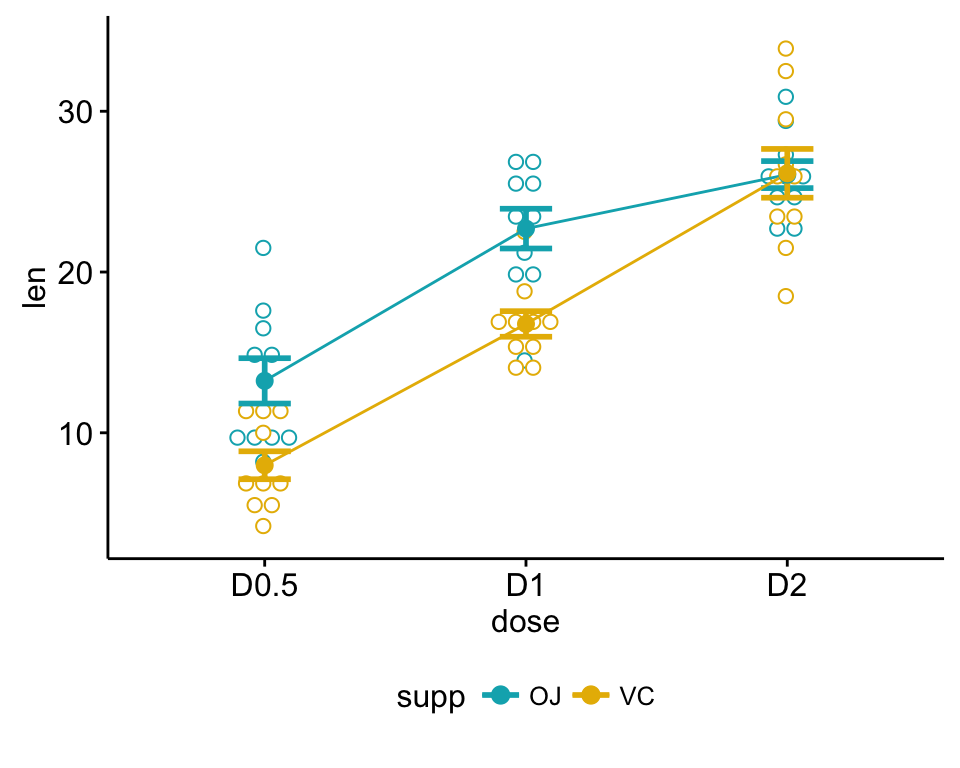

anova_stat ( df = df_melt, res_var = 'value', anova_model = 'value ~ C(treatments)' ) res. Sum_sq df F PR ( > F ) C ( treatments ) 3010.95 3.0 17.49281 0.000026 Residual 918.00 16.0 NaN NaN # ANOVA table using bioinfokit v1.0.3 or later (it uses wrapper script for anova_lm)įrom bioinfokit.analys import stat res = stat () res. anova_lm ( model, typ = 2 ) anova_table # output (ANOVA F and p value) Model = ols ( 'value ~ C(treatments)', data = df_melt ). Import statsmodels.api as sm from import ols # Ordinary Least Squares (OLS) model Import scipy.stats as stats # stats f_oneway functions takes the groups as input and returns ANOVA F and p valueįvalue, pvalue = stats. Note: If you have your own dataset, you should import it as pandas dataframe. One-way ANOVA method is suitable for analysis. Treatments, treatment factor has four levels.įor this experimental design, there is only factor (treatments) or independent variable to evaluate, and therefore, Here, there are four treatments (A, B, C, and D), which are groups for ANOVA analysis.

p value is estimated from F value and degree ofĮxample data for one-way ANOVA analysis tutorial, dataset A B C D 25 45 30 54 30 55 29 60 28 29 33 51 36 56 37 62 29 40 27 73 Theį value is a ratio of between- and within-group mean squares (MS). The total variation is the sum of between- and within-group variances. The sum of squares (SS), and mean squares (MS). The ANOVA table represents between- and within-group sources of variation, and their associated degree of freedoms,

It is also called univariate ANOVA as there is only one dependent variable in the model.Main types: One-way (one factor) and two-way (two factors) ANOVA (factor is an independent variable).Sometimes, ANOVA F test is alsoĬalled omnibus test as it tests non-specific null hypothesis i.e. ANOVA uses variance-based F test to check the group mean equality.Groups mean differences inferred by analyzing variances.ANOVA test used to compare the means of more than 2 groups (t-test can be used to compare 2 groups).


 0 kommentar(er)
0 kommentar(er)
